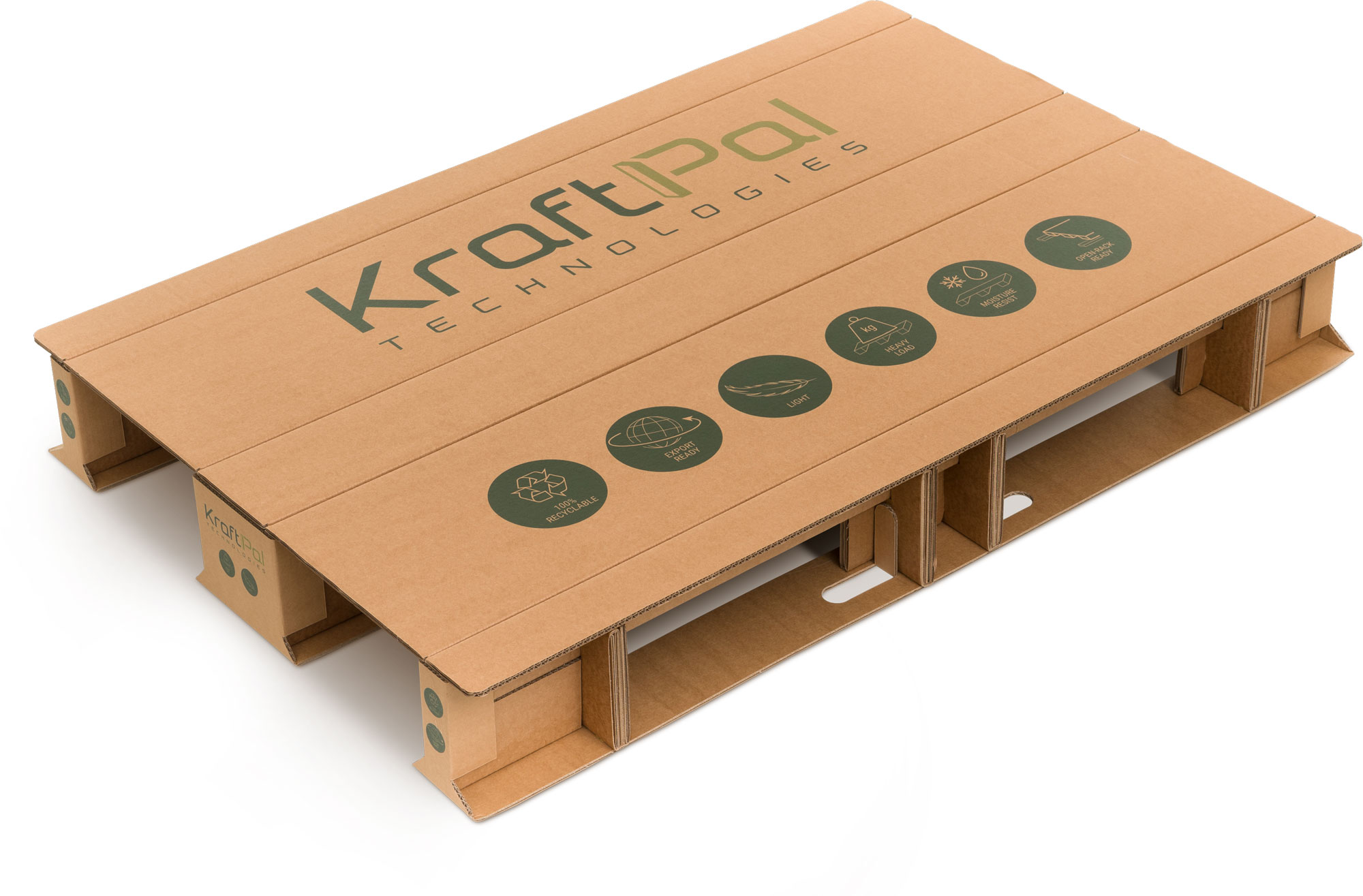
Pallet’s lifecycle begins with wood gathering and processing it into paper pulp and later into corrugated cardboard which is cut, folded, and assembled into pallets by KraftPal. During the use stage the pallets are loaded with goods and transported by road, air, or sea. Once they arrive at their destination the pallets are recycled, landfilled or incinerated.
Regardless of the pallet type, every stage and every process in its lifecycle leaves a certain footprint on the environment. This is why at KraftPal we carefully examine each and every part of the process individually and collectively to establish policies, minimizing our product’s and operations’ impact on the environment: from choosing only FSC-certified cardboard suppliers to consulting our clients on how to make their transport practices more sustainable.
Requiring 4,8x less raw input materials and assembled through efficient automatized production process, production of a single KraftPal pallet emits 52% less CO²e than the production of a wooden pallet. The KraftPal pallet prevails against wooden pallet also during the Product use stage. It’s more than 80% lighter which results in lower fuel consumption and associated CO2e emissions regardless of the mean of transport used.
In the end of life stage, both pallets perform similarly and reduce the CO²e from the atmosphere (negative emissions). However, the KraftPal pallets are recycled in 99% of cases which offsets the need to make paper pulp from newly cut down trees. On the other hand, the wooden pallets most commonly end up in landfills due to being too complex to recycle which takes up valuable space in nature and adds up to the accumulation of landfills across the world.
Cumulatively, KraftPal pallet lifecycle emits 12,6% less CO²e emissions in comparison to a standard EUR1 wooden counterpart throughout the complete lifecycle.
| Corrugated cardboard pallet | Wooden pallet | |
|---|---|---|
| Production | 2,39 kg | 5,00 kg |
| Product use [road transport] | 27,27 kg | 28,94 kg |
| End of life [weighted average] | -0,03 kg | -0,03 kg |
| Total | 29,64 kg | 33,91 kg |

As described by the Newton’s Second Law of Motion, acceleration (movement) happens when a force acts on a mass (object). In logistics’ this means that a loaded pallet is an object with a mass while the truck/plane/ship engine creates a force to accelerate (move) it by using fossil fuel as the energy source. Meaning, all other things, e.g. speed of movement and distance, being equal, cargo loaded onto lighter pallets requires less energy to move, resulting in lower energy source consumption (i.e. burning fossil fuel) and therefore lower CO²e emissions.
To minimize the impact of its operations on the environment, KraftPal pays special notice to the production process and the electricity sources. KraftPal’s flagship production facility, located in Sankt Margarethen an der Raab, Austria, only uses electricity from renewable energy sources.
Recycling KraftPal pallets is easy. Once the pallet has completed its trip it can be disposed into cardboard collecting containers placed behind every warehouse or a retailer shop. From there it follows the established path to the recycling company where it is graded, balled, and processed before being turned into new products/or eventually into new KraftPal pallets. Moreover, used cardboard is a commodity with a value and can be sold.
Now, imagine recycling process of a wooden pallet. A heavy pallet is placed behind the warehouse where it is exposed to rain and temperature fluctuation degrading the wood as material. Then it undergoes a process of dismantling and separating wooden parts from iron nails, before it can be mulched into wood chips for use in garden or to make low quality paper. The whole process is lengthy and too complex and is therefore often charged by the recycling companies.
REUSE
REDUCE
RECYCLE
A significant portion of the environmental impact during the production stage comes from the process leading up to point when cut cardboard sheets are delivered to KraftPal production site by our suppliers. Choosing the right cardboard suppliers with established sustainable policies, procedures, and certificates, as well as performing periodical scrutiny reviews is therefore the cornerstone of KraftPal’s sustainability strategy.
For KraftPal FSC-certified corrugated cardboard is a standard ensuring our pallets are made from raw material coming from forests managed in a way that preserves biological diversity and benefits the lives of local people and workers, while ensuring it sustains economic viability. For every order of cardboard we keep a record on its origin and certification, supported by a chain of custody through every stage in the supply chain from the forest to the final user.

